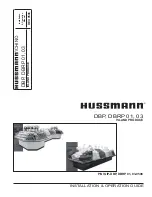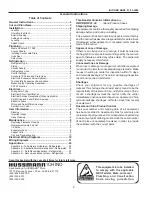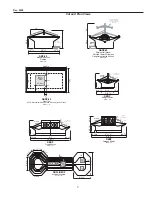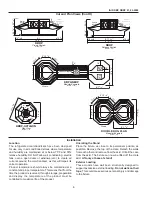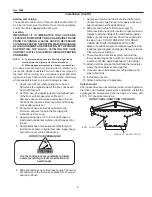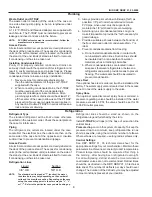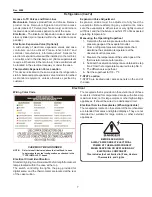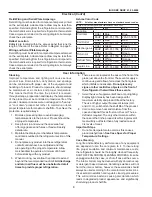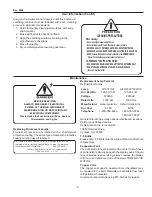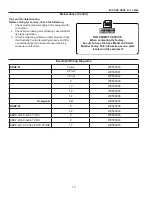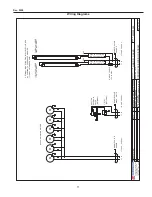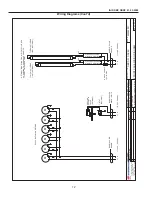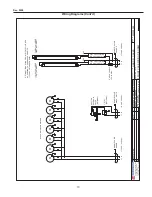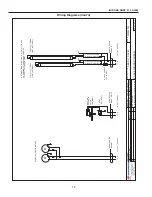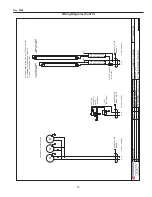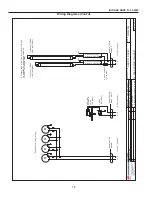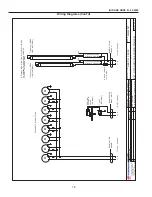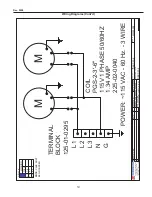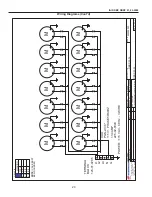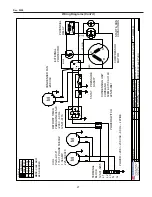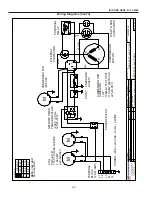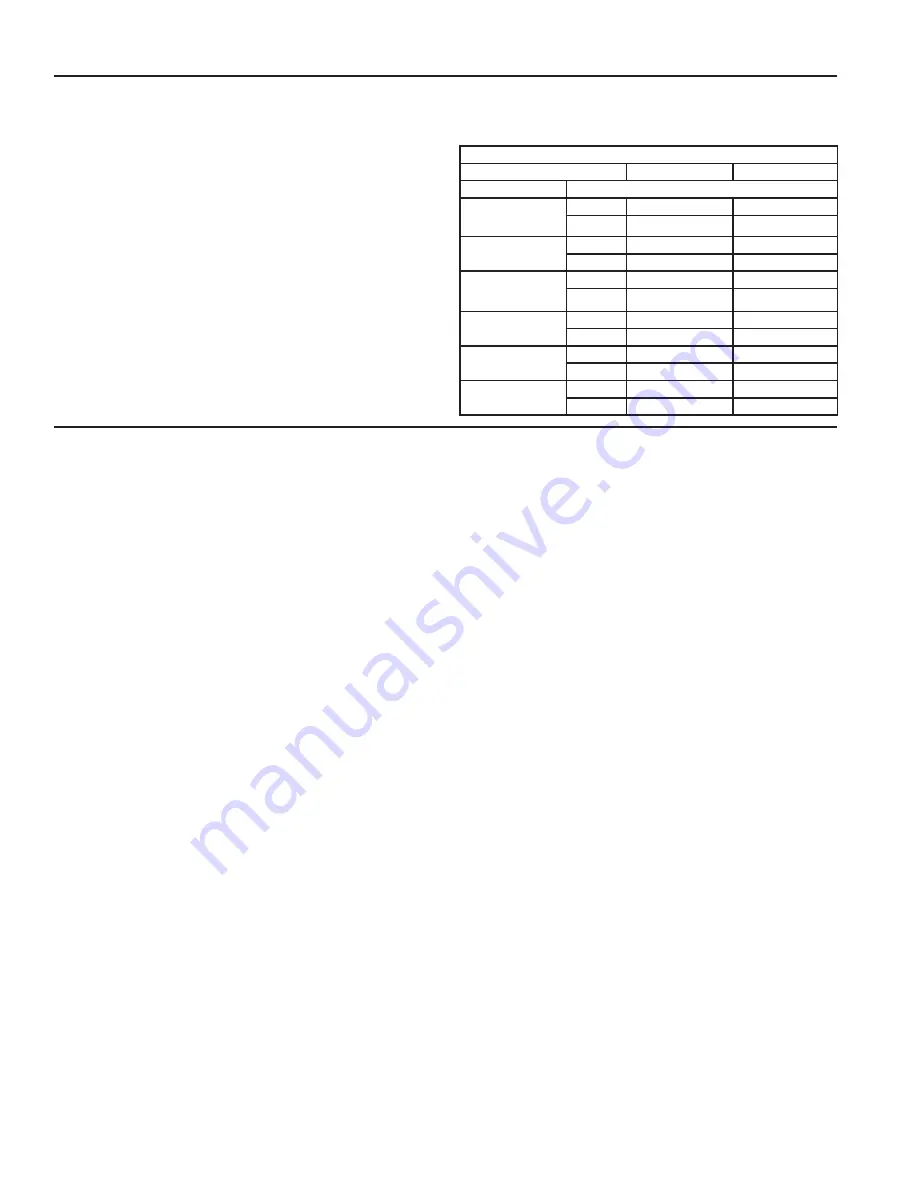
IGIP-DBP, DBRP 01, 03-0508
8
Field Wiring and Serial Plate Amperage
Field Wiring must be sized for component amperes printed
on the serial plate. Actual ampere draw may be less than
specified. Field wiring from the refrigeration control panel to
the merchandisers is required for refrigeration thermostats.
Case amperes are listed on the wiring diagram, but always
check the serial plate.
Ballast Location
Ballasts are located within the access panel that runs the
length of the rear of the case. Refer to diagram on page 5.
Wiring and Serial Plate Amperage
Field Wiring must be sized for component amperes stamped
on the serial plate. Actual ampere draw may be less than
specified. Field wiring from the refrigeration control panel to
the merchandisers is required for refrigeration thermostats.
Case amperes are listed on the wiring diagram, but always
check the serial plate.
Ashrae Color Code
NOTE: All other manufacturers have no standard sensor codes.
Case Control Systems SENSOR COLOR
Manufacturer ® >
EIL
CPC
Location
Coil Inlet
Color
Blue
Blue
Part#
5-01-1755
5-01-355
Coil Outlet
Color
Red
Red
Part#
5-01-1757
5-01-313
Discharge Air
Color
Green
Green
Part#
5-01-1756
5-01-360
Return Air
Color
Purple
Green
Part#
5-01-1758
5-01-360
Defrost Term. Color
White
Orange
Part#
5-01-0650 5-01-354
Liquid Line
Color
White
Blue
Part#
5-01-0650
5-01-355
Electrical (Cont'd)
User Information
Stocking
Improper temperature and lighting will cause serious
product loss. Discoloration, dehydration and spoilage
can be controlled with proper use of the equipment and
handling of product. Product temperature should always
be maintained at a constant and proper temperature.
This means that from the time the product is received,
through storage, preparation and display, the temperature
of the product must be controlled to maximize life of the
product. Hussmann cases were not designed to “heat up”
or “cool down” product-but rather to maintain an item’s
proper temperature for maximum shelf life. To achieve the
protection required always:
1. Minimize processing time to avoid damaging
temperature rise to the product. Product should be
at proper temperature.
. Keep the air in and around the case area free
of foreign gasses and fumes or food will rapidly
deteriorate.
3. Maintain the display merchandisers temperature
controls as outlined in the refrigerator section of this
manual.
4. Do not place any product into these refrigerators
until all controls have been adjusted and they
are operating at the proper temperature. Allow
merchandiser to operate a minimum of 6 hours
before stocking with any product.
5. When stocking, never allow the product to extend
beyond the recommended load limit.
Air discharge
and return air flue must be unobstructed at all
times to provide proper refrigeration.
6. There are vents located at the base of the front of the
glass, just above the front rail. These vents supply a
continuous, gentle flow of air across the front glass
which inhibits condensation.
Do not place any
signs or other restrictive objects on the front of
the refrigerator that will block these vents.
7. Avoid the use of supplemental flood or spot lighting.
Display light intensity has been designed for
maximum visibility and product life at the factory.
The use of higher output fluorescent lamps (H.O.
and V.H.O.), will shorten the shelf life of the product.
8. Cold coils remove heat and moisture from the
case and deposit this as frost onto the coil. Thus, a
defrost is required. The only other moisture within
the case is that in the product itself. A single level of
meat will dry out faster than a fully loaded case of
3-4 levels of meat.
Important Steps
1. Do not set temperature too cold, as this causes
product dehydration.
See Case Specs for Proper
Temperature: Settings
.
Case Cleaning
Long life and satisfactory performance of any equipment
are dependent upon the care given to it. To insure long
life, proper sanitation and minimum maintenance costs,
the refrigerator should be thoroughly cleaned frequently.
SHUT OFF FAN DURING CLEANING PROCESS. It can be
unplugged within the case, or shut off case at the source.
The interior bottom may be cleaned with any domestic soap
or detergent based cleaners. Sanitizing solutions will not
harm the interior bottom, however, these solutions should
always be used according to the manufacturer’s directions.
It is essential to establish and regulate cleaning procedures.
This will minimize bacteria causing discoloration which
leads to degraded product appearance and significantly
shortening product shelf life.

